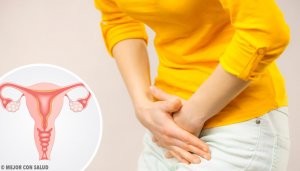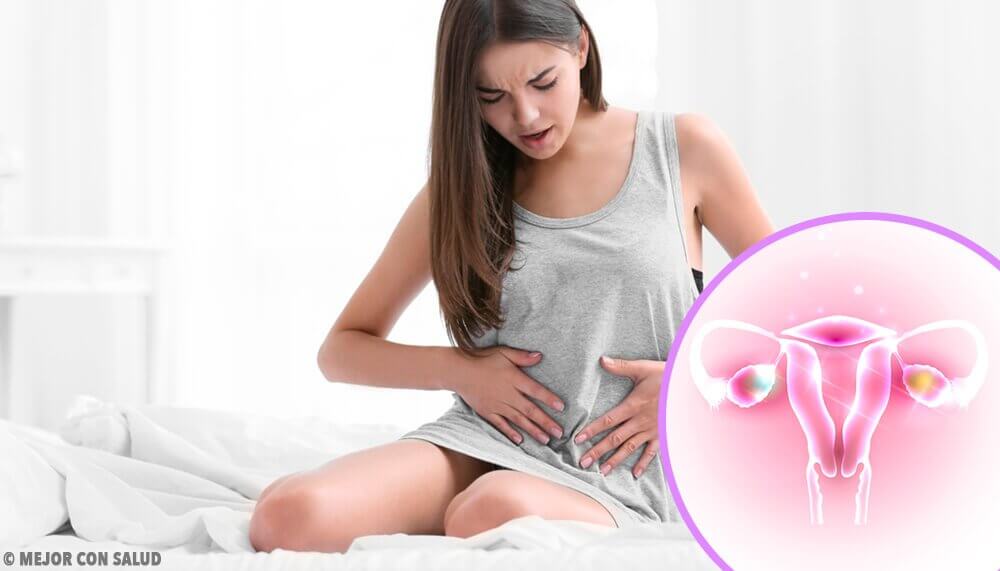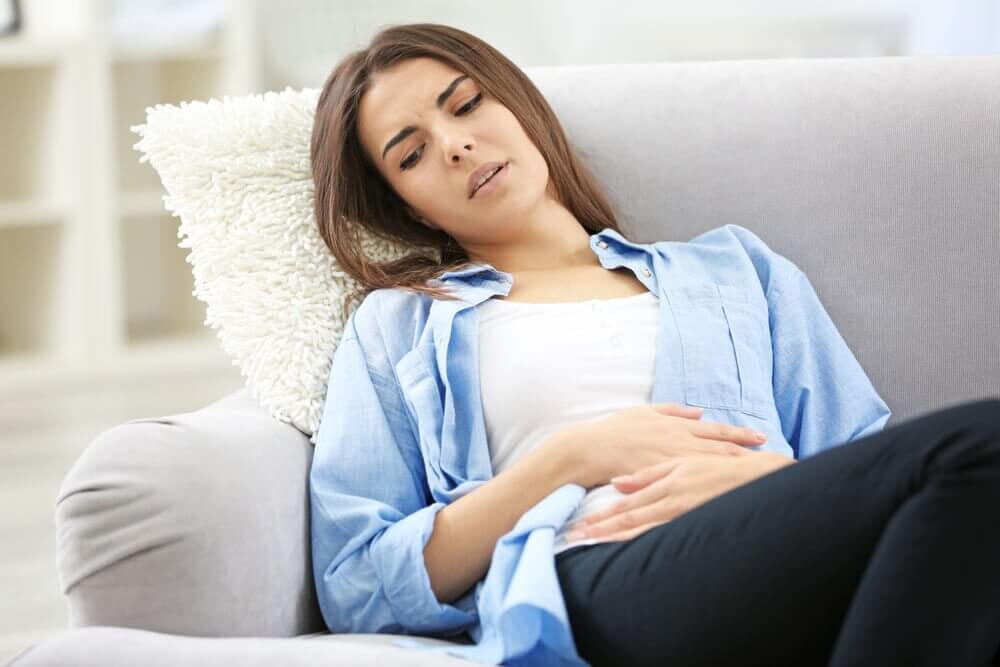Ovary Pain: A Symptom of a Bigger Problem

It all depends on the person. Pains can surge during ovulation, at the start of menstruation, in middle or even throughout the whole cycle.
What is ovary pain?

Ovaries are two glands that produce ovules. In both size and shape, they’re similar to almonds. They’re located in the lower area of the abdomen, on each side of the uterus right above the Fallopian tubes.
When women are fertile, the ovaries are mainly responsible for producing ovules. Hormones (estrogen and progesterone) keep the feminine reproductive system running smoothly.
The pain in this particular area arises from complications that are linked with the reproductive system and nearby organs.
According to studies, pain in the abdominal or pelvic area is one of the leading causes for trips to the gynecologist and hospitalization.
In many cases, the pain doesn’t imply any serious problem, but we should always be careful.
Factors to consider
There are several factors that you should pay attention to if you suffer from this type of pain. These include:
- Recent surgeries
- The location of the pain
- Changes in urination or bowel movements
- Time when the pain began
- Current medications and their interaction
- Duration and average amount of menstrual fluids
We should consider these factors and monitor the symptoms in case they worsen. Knowing all this information will be helpful for your doctor and he or she will be able to give you a more accurate diagnosis.
Symptoms

Most cases of ovary pain don’t show serious symptoms and often disappear with time. In other words, it’s a temporary pain.
However, the general symptoms are:
- Painful bowel movements
- Abdominal heaviness
- Nausea, vomiting or breast sensitivity
- Abdominal pain is the strongest symptom
- Sometimes ,women feel pressure on their bladder, which leads to frequent urination
- Pelvic pain (that might extend to the back or thighs)
- Pelvic pain during sexual intercourse
Causes

- Ovulation. Follicle growth on the ovaries’ surface. Not all women suffer from this type of pain, but it’s common. It can occur before, during and after menstruation.
- Menstruation. Pain is common for many women. It can be mild or intense. The pain results from the contractions of the muscles in the uterus.
- Ovarian cysts. Cases of ovarian cysts may vary in size, but they’re most often benign. They’re full of liquid and are painful upon eruption.
- Endometriosis. This is a common condition. The pain occurs when cells grow outside of the uterus (in the ovaries, bladder, intestine).
- First month of pregnancy. The changes that the uterus undergoes can cause ovary pain.
- Ectopic pregnancy. An ectopic pregnancy involves an embryo that grows outside of the uterine lining. If it isn’t treated in time, it can be a life-threatening situation for the mother. One of the most common symptoms is abnormal vaginal bleeding, back pain and skipping periods. Women might also feel a strong pressure in their rectum and feel mild or light cramps in a part of their pelvis. Lastly, they might also feel pain in their lower abdomen.
- Pelvic inflammatory disease (PID). This disease causes the inflammation of the ovaries, Fallopian tubes and uterine opening. It’s the result of bacterial infections, mainly gonococci bacteria, which are responsible for gonorrhea.
- Infections.
Visit the article: 7 Reasons Why You Might Feel Pain in Your Ovaries
Treatment

Which kind of treatment a woman might need depends of the cause of the pain. Therefore, a visit to the doctor is a must. However, there are some general things that can relieve ovary pain:
- Avoid coffee during menstruation. Coffee tightens blood vessels, thus, raising blood pressure. The result might be ovary pain.
- Exercise. Exercising can help you control the pain in addition to helping you keep a healthy lifestyle. Aim to exercise two or three times a week.
- Teas. There are plenty of teas that help relieve ovary pain.
All cited sources were thoroughly reviewed by our team to ensure their quality, reliability, currency, and validity. The bibliography of this article was considered reliable and of academic or scientific accuracy.
- Baquedano Mainar, L., Lamarca Ballestero, M., Puig Ferrer, F., & Ruiz Conde, M. A. (2014). Enfermedad inflamatoria pélvica: un reto en el diagnóstico y tratamiento precoz. Revista Chilena de Obstetricia y Ginecología. https://doi.org/10.4067/S0717-75262014000200009
- Bavera, G. A. (2009). Quistes ováricos. Enfermedades y Problemas Reproductivos. https://doi.org/10.1016/B978-84-458-1311-9.50097-5
- Bueno, F. N., Sáez, J. C., Ocaranza, M. B., Conejeros, C. R., Vaccarezza, I. P., Borquez, P. V, & Soto, E. R. (2002). TRATAMIENTO MEDICO DEL EMBARAZO ECTOPICO *. REV CHIL OBSTET GINECOL. https://doi.org/10.4067/S0717-75262002000300001
- Bulun, S. E. (2018). Endometriosis. In Yen & Jaffe’s Reproductive Endocrinology: Physiology, Pathophysiology, and Clinical Management: Eighth Edition. https://doi.org/10.1016/B978-0-323-47912-7.00025-1
- Dunselman, G. A. J., Vermeulen, N., Becker, C., Calhaz-Jorge, C., D’Hooghe, T., De Bie, B., … Nelen, W. (2014). ESHRE guideline: Management of women with endometriosis. Human Reproduction. https://doi.org/10.1093/humrep/det457
- Hernández Durán Daisy, & Diaz, O. M. (2010). Ginecología Y Salud Reproductiva. Enfermedad Inflamatoria Pélvica. https://doi.org/10.1023/B:JIEN.0000032774.01082.41
- Meira La Costa, E. DA, Ulloa, A., & Luis, F. (2013). Embarazo Ectopico. Revistas Bolivianas. https://doi.org/10.1037/e553842012-001
- Vázquez, A. D., & Vázquez Romo, J. J. (1966). Enfermedad pélvica inflamatoria. Ginecologia y Obstetricia de Mexico. https://doi.org/10.1056/NEJMra1411426
This text is provided for informational purposes only and does not replace consultation with a professional. If in doubt, consult your specialist.








